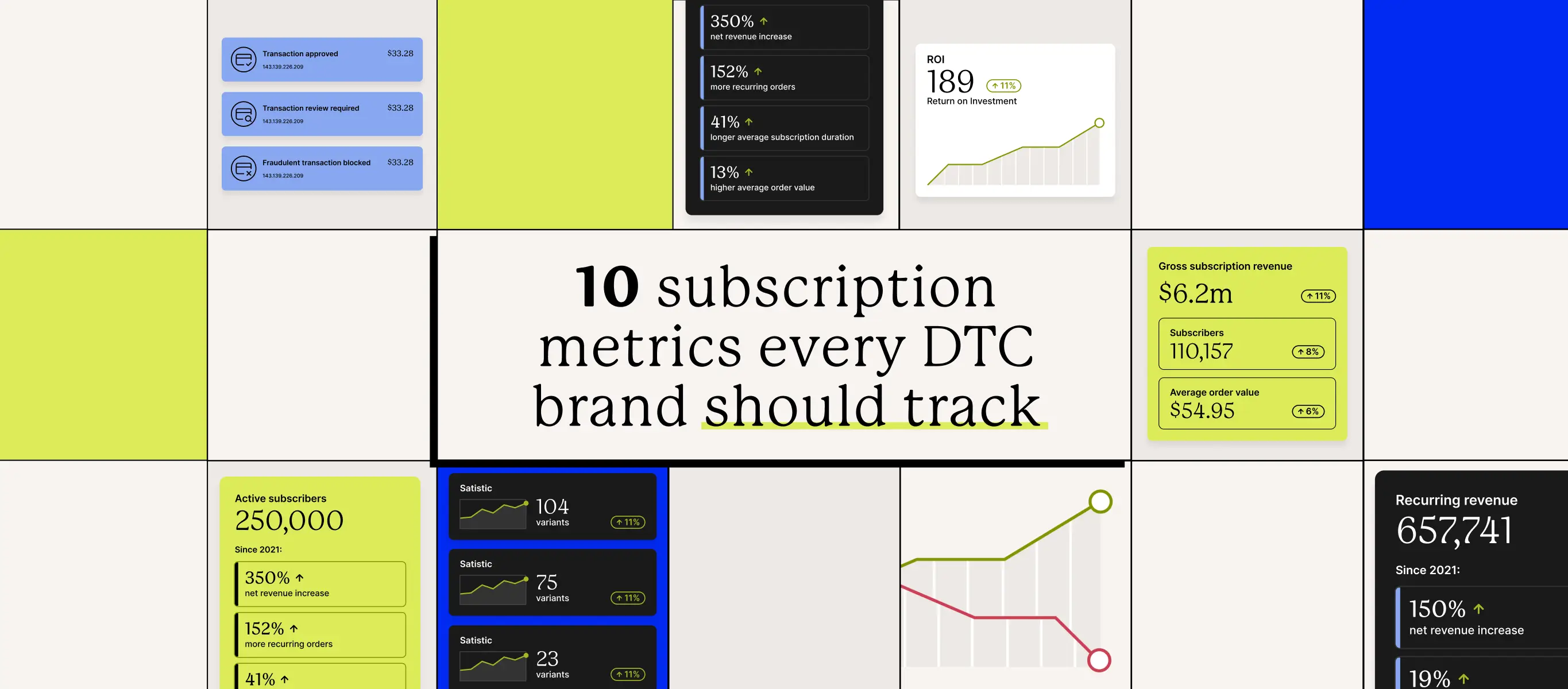This Earth Month, we are diving into the different ways that merchants are considering the environment as they do business. Subscription services lend themselves to ethical and sustainable practices since they allow merchants to predict future demand and give customers the chance to bundle their products and reduce shipping needs.
There are the obvious modes of making your business greener and lowering your environmental impact—like using eco-friendly packaging and shipping items in as few boxes as possible. Other methods of going green are less obvious, like integrating with an app that allows customers to offset the carbon footprint of their orders.
Regardless of the sustainable business practices you choose to undertake, showcasing your environmentally conscious products and campaigns will demonstrate to your customers that you’re serious about creating a more sustainable future. It’s clear that many consumers today are looking for brands that make the environment a priority in their mission—and care about future generations—so merchants should make their environmental initiatives clear to their customers.
Key takeaways
- Sustainable ecommerce goes beyond offering environmentally friendly products.
- There are unique ways that ecommerce businesses can ensure a sustainable future—like offering carbon offsets to those online shopping.
- Making your sustainable measures visible is important to consumers, who want to track their environmental impacts when purchasing products.
How merchants can commit to sustainable ecommerce
1. Offer carbon-neutral options
Apps like EcoCart, Corso, and Ecodrive can be integrated with Recharge and give consumers the opportunity to purchase a carbon offset. With this option, merchants can offer carbon-neutral subscriptions and significantly lower their carbon footprint. Contributions go to projects that have a positive impact on the environment, like renewable energy, forestry, or clean water projects.
Integrating is easy, and so is buying the offset. Before you know it, your customers will be opting to make their purchases carbon-neutral. Check out these statistics from EcoCart that prove environmental and sustainability awareness are crucial points of focus for brands these days:
- 92% of customers want to support brands taking positive climate action
- 28% of shoppers choose to make their orders carbon neutral
- 14% average cart conversion boost by adding EcoCart to your checkout

2. Make it easy to alter orders
Allowing customers to edit their own orders and subscription plans is a major factor in successful subscription services. Whether it’s with a personalized customer portal or through transactional SMS, giving shoppers the opportunity to alter orders can increase customer satisfaction and decrease the amount of shipping you have to do.
When a customer skips or makes an adjustment to an order, it helps the environment by avoiding any unnecessary shipments. Plus, consumers aren’t left with extra products at home that they don’t need or won’t end up using. Less waste and less shipping are both productive ways to be more green as a business.
3. Offer easy add-ons and bundling
Allowing customers to bundle products or add on one-time purchases to their shipment can help the earth, too. When products are shipped together in less packaging, it’s a win-win situation for everyone. Add-on and upsell options can also help ecommerce brands increase their revenue, while removing any need for second deliveries.
4. Use eco-friendly packaging & reduce packaging waste
This might be an obvious environmental initiative that merchants can focus on, but it’s an important one nonetheless. Going beyond just your boxes or shipping pouch, think about all the packaging and materials you utilize when you ship an order. Customers who care about the environment will appreciate when you keep it minimal and meaningful.
Plus, merchants can go a step further by creating products that have a second life. For example, Keap Candles sells their candles in jars that can be reused once the candle is finished. They include detailed instructions on their site for removing the wax and different uses the candle holder could have in its second life.

5. Reward environmentally conscious behavior
Many merchants offer rewards or loyalty programs for their subscribers. They keep customers engaged and excited about making more purchases and gaining access to special deals. Why not include incentives for environmentally conscious behavior? According to American Express, rewarding green choices is one of the best ways to make your business more eco-friendly.
Go beyond sustainable products & showcase your sustainable practices
Merchants that are working hard to offer these green options to customers should be proud of their efforts to make the earth a better place. Plus, doing more for the environment can be a great marketing tool to attract customers who are also interested in creating a bright future for our planet.
Consider showcasing what you’re doing year-round, not just during Earth Month. If you offer carbon-neutral offsets, showcase some stats on your website for shoppers to see. Or, include your environmental efforts in emails and other communication with subscribers. They will be happy to see your efforts and how they are a part of making the earth a better place with your brand.



